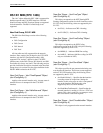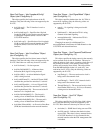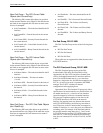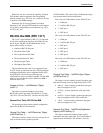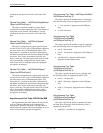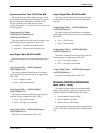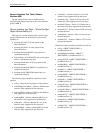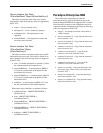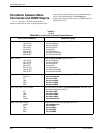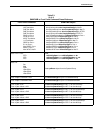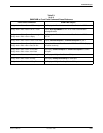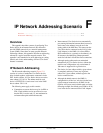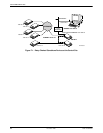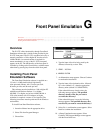
SNMP MIB Objects
E-153360-A2-GB20-20 December 1996
Generic Interface Test Table –
“ifExtnsTestResult” Object (ifExtnsTestEntry 5)
This object contains the result of the most recently
requested test. Only the following values are supported by
the E1 NTU.
• none(1) – No test currently active.
• inProgress(3) – A test is currently in progress.
• notSupported(4) – The requested test is not
supported.
• unAbleToRun(5) – The requested test cannot run
due to the state of the unit.
Generic Interface Test Table –
“ifExtnsTestCode” Object
(ifExtnsTestEntry 6)
This object contains a code that contains more specific
information on the test result. This object is defined as an
object identifier. Only the following values are supported
by the E1 NTU.
• none – No further information is available. Used for
the send pattern/code and loopback tests.
• inSyncNoBitErrors – A monitor pattern (QRSS or
511) test has synchronized on the pattern and has
not detected any bit errors.
• inSyncWithBitErrors – A monitor pattern (QRSS or
511) test has synchronized on the pattern and has
detected bit errors.
• notInSync – A monitor pattern (QRSS or 511) test
has not synchronized on the requested pattern.
Where these object identifiers are defined as follows:
• wellKnownCodes – OBJECT IDENTIFIER ::=
[ifExtensions 5]
• none – OBJECT IDENTIFIER ::=
[wellKnownCodes 1]
• inSyncNoBitErrors – OBJECT IDENTIFIER ::=
[wellKnownCodes 2]
• inSyncWithBitErrors – OBJECT IDENTIFIER ::=
[wellKnownCodes 3]
• notInSync – OBJECT IDENTIFIER ::=
[wellKnownCodes 4]
Paradyne Enterprise MIB
The variable devConfigAreaCopy under the
devConfigAreaCopy group in the common area of the
Paradyne Enterprise MIB will be supported. This variable
allows the entire contents of one configuration area to be
copied into another configuration area. Only the following
values are supported by the E1 NTU.
• noOp(1) – An attempt to read this value returns a
“noOp” response.
• active-to-customer1(2) – Copy from the active area
to the customer 1 area.
• active-to-customer2(3) – Copy from the active area
to the customer 2 area.
• customer1-to-active(4) – Copy from the customer 1
area to the active area.
• customer1-to-customer2(5) – Copy from the
customer 1 area to the customer 2 area.
• customer2-to-active(6) – Copy from the customer 2
area to the active area.
• customer2-to-customer1(7) – Copy from the
customer 2 area to the customer 1 area.
• factory1-to-active(8) – Copy from the factory area
to the active area. (There is only one factory area
for the E1 NTU.)
• factory1-to-customer1(9) – Copy from the factory
area to the customer 1 area.
• factory1-to-customer2(10) – Copy from the factory
area to the customer 2 area.




